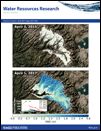Hoagland et al., 2017
Hyporheic zone influences on concentration-discharge relationships in a headwater sandstone stream
Hoagland, Beth, Russo, Tess A., Gu, Xin, Hill, Lillian, Kaye, Jason, Forsythe, Brandon, and Brantley, Susan L. (2017)
Water Resources Research, 53(6):4643–4667
-
Shale Hills, GRAD STUDENT
-
Shale Hills, INVESTIGATOR
-
Shale Hills, GRAD STUDENT
-
Shale Hills, INVESTIGATOR
-
Shale Hills, STAFF
-
National, Eel, Luquillo, Shale Hills, INVESTIGATOR, COLLABORATOR
Plain English Summary
Stream chemistry serves as a fingerprint for the processes that occur in the critical zone, which extends from unweathered bedrock to the top of the tree canopy. The critical zone thus includes all resources critical to life. This paper evaluates chemical and physical processes in the critical zone, specifically in soils, streams, and groundwater. Our work suggests the important influence of groundwater-surface water interactions on mountain streams with an emphasis on the transport of water and solutes through the streambed. By comparing these transport processes on sandstone and shale, we hypothesize that the type of rock underlying a watershed can influence the relative importance of groundwater-surface water interactions on stream chemistry.
Abstract
Complex subsurface flow dynamics impact the storage, routing, and transport of water and solutes to streams in headwater catchments. Many of these hydrogeologic processes are indirectly reflected in observations of stream chemistry responses to rain events, also known as concentration-discharge (CQ) relations. Identifying the relative importance of subsurface flows to stream CQ relationships is often challenging in headwater environments due to spatial and temporal variability. Therefore, this study combines a diverse set of methods, including tracer injection tests, cation exchange experiments, geochemical analyses, and numerical modeling, to map groundwater-surface water interactions along a first-order, sandstone stream (Garner Run) in the Appalachian Mountains of central Pennsylvania. The primary flow paths to the stream include preferential flow through the unsaturated zone (‘‘interflow’’), flow discharging from a spring, and groundwater discharge. Garner Run stream inherits geochemical signatures from geochemical reactions occurring along each of these flow paths. In addition to end-member mixing effects on CQ, we find that the exchange of solutes, nutrients, and water between the hyporheic zone and the main stream channel is a relevant control on the chemistry of Garner Run. CQ relationships for Garner Run were compared to prior results from a nearby headwater catchment overlying shale bedrock (Shale Hills). At the sandstone site, solutes associated with organo-mineral associations in the hyporheic zone influence CQ, while CQ trends in the shale catchment are affected by preferential flow through hillslope swales. The difference in CQ trends document how the lithology and catchment hydrology control CQ relationships
Citation
Hoagland, Beth, Russo, Tess A., Gu, Xin, Hill, Lillian, Kaye, Jason, Forsythe, Brandon, and Brantley, Susan L. (2017): Hyporheic zone influences on concentration-discharge relationships in a headwater sandstone stream. Water Resources Research, 53(6):4643–4667 . DOI: 10.1002/2016WR019717
 This Paper/Book acknowledges NSF CZO grant support.
This Paper/Book acknowledges NSF CZO grant support.
Explore Further







